Proper range estimation is a massive part of successfully engaging targets. Whether hunting, competing, or practicing, a good range call is often the critical difference between a miss and a hit.
At short ranges, your distance to the target can usually be estimated without any tools. The difference between 150 and 175 yards won’t make much difference unless you’re shooting something like .300 Blackout subsonic rounds. That same margin of error though—just 25 yards—can make all the difference when the target is 700 yards away.
Once you get beyond a couple hundred yards, eyeballing the target and guessing the distance stops being effective. To determine the precise distance to a target over five hundred yards away, you’ll need some assistance.
Laser rangefinders work, but they’re dependent on batteries and can be unreliable in certain weather conditions. For serious enthusiasts, it’s worth knowing how to estimate the distance to a target without any gadgets.
Shop All In-Stock Rifle Scopes
Luckily, your scope will often have everything you need built in. Technically, you don’t even need a rifle or scope mount to range a target—just a scope with a ranging-capable reticle that is based in milliradians or MOA.
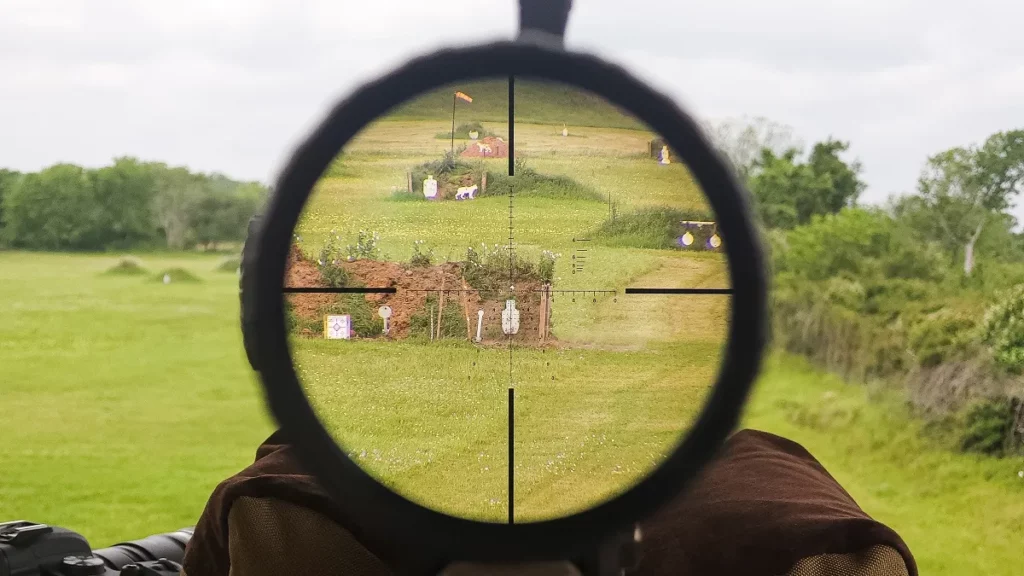
The Basics of Range Estimation: MOA and MILs
The core concept that allows reticle-based ranging to function is angular units of measure. Most scope reticles include marks at evenly spaced numeric intervals, usually either ‘MOA’ or ‘MILs’. Basically, both MILs (milliradians) and MOA (Minutes of Angle) measure a specific fraction, or slice of, a circle, rather than a set length.
Because of this, reticle stadia scale to distance. Both MOA and MILs do essentially the same thing, but are slightly different units of measure. A single MIL, for example, is equivalent to 10cm per 100 meters of distance, meaning it’s equal to 10cm at 100 meters, 30 centimeters at 300, and so on. MOA reticles are essentially the same concept with an inch-yard basis, although the measurement isn’t as conveniently round.
Because these units scale to distance, if we know the estimated height of an object, and can measure its height in MILs or MOA, we can use those two numbers to calculate the distance.
For this to work, you’ll need to know the precise or estimated height of the target you’re ranging. For example, an IPSC targets is 57 centimeters tall. Knowing that, we can measure the height of the target in MILs using the reticle of our scope, and calculate the distance to it.
It’s worth noting that for this technique to work, you’ll need to know the exact subtensions of your reticle. For first focal plane scopes, this is as simple as memorizing the subtensions or consulting the manual.
For second focal plane scopes, you’ll need to either set the magnification to the power level at which the subtensions are calibrated (usually max) or do some calculations to figure out the actual value of your subtensions at your magnification level.Shop All In-Stock First Focal Plane Scopes
As such, most users consider FFP scopes to be superior for range estimation, as they allow users to select a power level with whatever balance of magnification and field of view is appropriate for the application without having to recalculate the value of their subtensions.
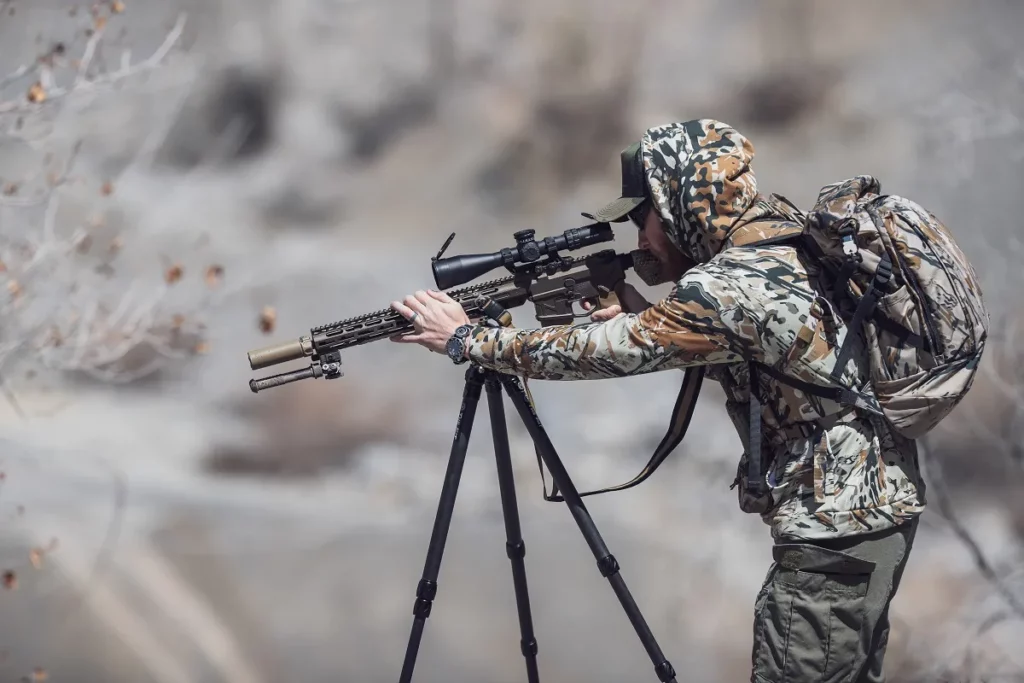
Ranging Targets with MIL Reticles
Ranging targets using MIL reticles and metric measurements tends to be the easiest, so that’s where we’ll start. Assuming we’re still looking at a standard 57cm-tall target, we know the height in centimeters already.
To get the height in MILs, assume a stable position and place the crosshairs at the top of the target. Then, just like using a tape measure, note where the bottom of the target measures on the crosshair. If it’s between two dots or hash marks, you’ll have to do your best to estimate the value.
Depending on your reticle, you may also be able to place the crosshairs at the bottom of the target and measure from the bottom up—it doesn’t really matter, so long as you get an accurate measurement. You can even do this with the crosshairs in the center of the target, or using width rather than height.
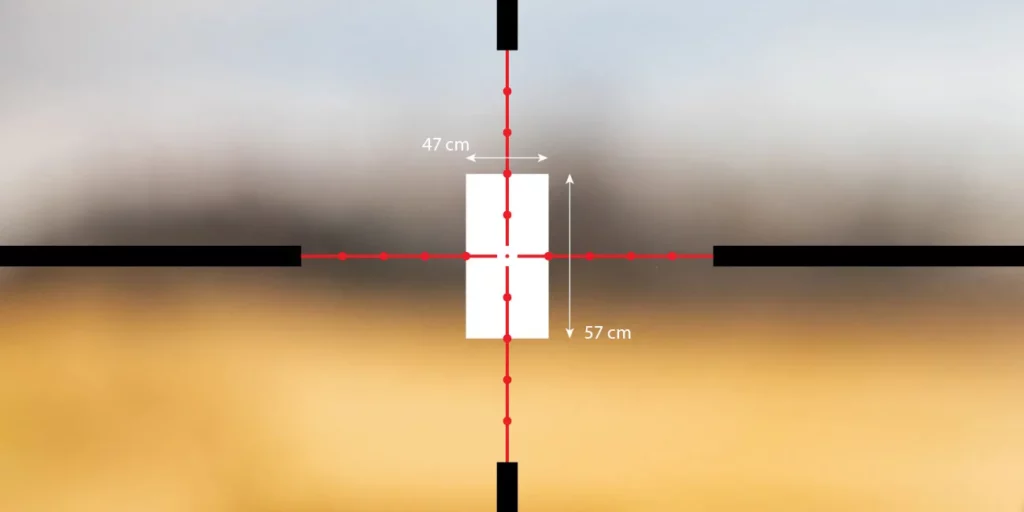
Let’s say, for the sake of our example, that the target measures 4 MILs in height. Now, all that’s left is a bit of simple calculation. Note that you will have to convert the known target size from centimeters to meters, but that’s as simple as dividing by 100. In our example, 57 centimeters is equal to 0.57 meters.
The formula goes like this:
Target Size in Meters * 1000 / Target Size in MILs = Distance To Target in Meters
So if we plug in the numbers from our example:
0.57 * 1000 / 2.5 = 142.5 Meters
This method can be used to estimate the distance to any target and requires nothing more than your scope and possibly a bit of paper to work out the math on.
While the example is in meters, it is possible to use MIL ranging with imperial units. However, doing so requires a different constant to be used in the formula, and makes the math less convenient. Here’s the formula for imperial measurements:
Target Size in Inches * 27.77 / Target Size in MILs = Distance To Target in Yards
However, it’s only as good as the accuracy of your measurements. An error in either estimating the actual dimensions of the target or in measuring in MILs will result in an inaccurate distance, so practice on a range is heavily recommended before attempting to use the technique in the field.
Shop All In-Stock Spotting Scopes
For the most accurate measurements, you may consider investing in a spotting scope with a reticle with more precise subtensions than those commonly found in rifle scopes.
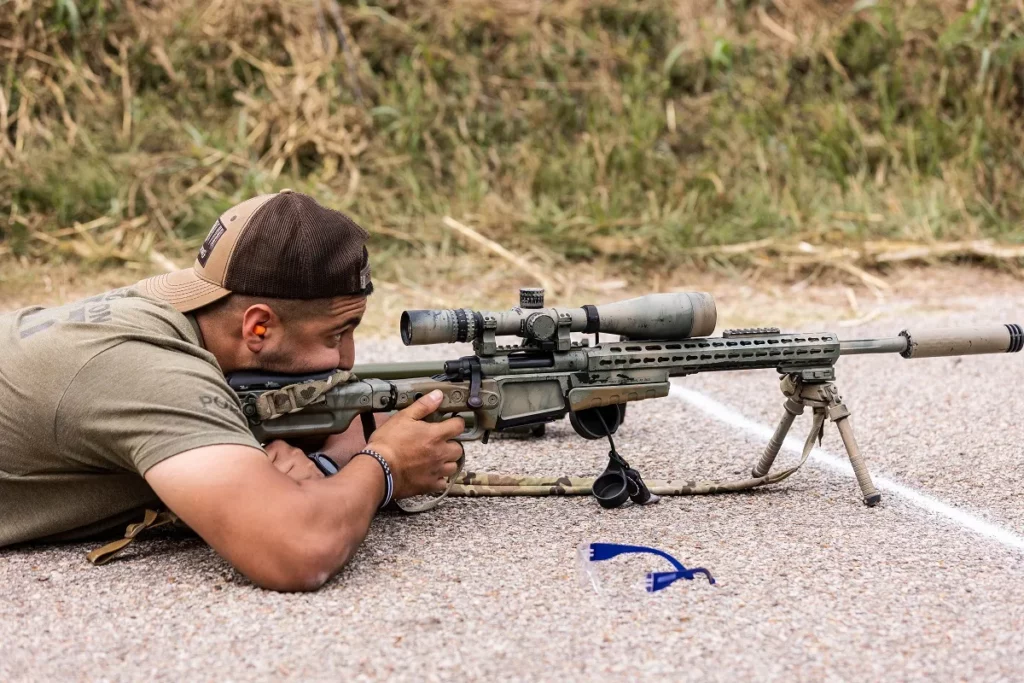
Ranging Targets with MOA Reticles
The same basic procedure can be used to range targets using an MOA reticle, but with imperial measurements instead. For this example, we’ll use a USPSA target, since its standard height is measured in inches rather than centimeters. A regulation USPSA target is 30 inches tall.
The process for measuring the target is the same, so we won’t rehash it. Let’s say for our example that the target measures a nice round 14 MOA.
Here’s where it gets a little tricky. While most folks will tell you that one MOA is equal to one inch per hundred yards of distance, that’s not entirely correct. The precise measure is 1.047 inches per 100 yards. This makes the math a little harder than it is with MILs and meters.
Here’s the formula:
Target Size in Inches * 95.5 / Target Size in MOA = Distance to Target in Yards
Plugging our measurements into the formula, we get a result of 716.25 yards. While the MIL calculations can sometimes be done in your head, most marksmen will probably need a calculator or scrap of paper to work this out, especially when the numbers aren’t quite as round as in our example.
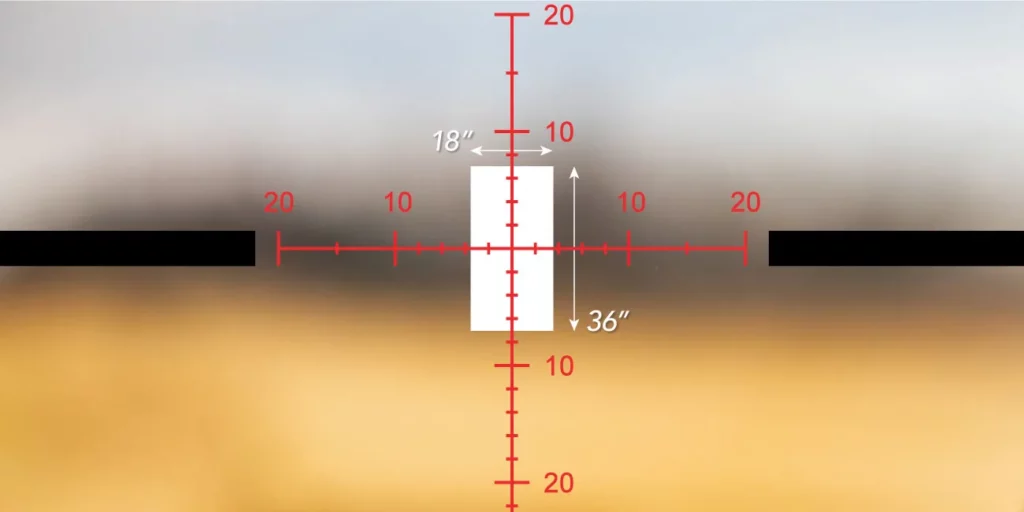
You may have seen this formula written elsewhere with a constant of 100 instead of 95.5, which makes the math simpler. This is achieved by rounding the value of 1 MOA down to 1 inch at 100 yards, which as we discussed before, is imprecise. The result is a margin of error large enough to cause a missed shot at even intermediate ranges, so the above formula should almost always be used rather than the simplified version.
Which system is best for you will depend on your abilities and needs.

Ranging Targets with ACSS® Auto-Ranging Tools
Traditionally, reticle ranging is done with MIL or MOA subtensions, but some reticles offer an even faster alternative with pre-calibrated ranging stadia. These stadia are sized to match common heights and widths, so as long as you have a matching target downrange, you can skip all the math and jump to an immediate firing solution. At Primary Arms, we call this ‘auto-ranging’.
If you have a magnified optic with an ACSS (Advanced Combined Sighting System) reticle, chances are good that it has auto-ranging stadia built in. These auto-ranging stadia might appear as a small bracket or ladder, or they may be integrated into the reticle’s holdover stadia directly, making it easy to range and engage targets more efficiently. Most of our auto-ranging stadia are calibrated for width (18” or 19”) or height (5’10 or 5’7). The exact calibration may vary slightly by reticle, so it’s important to review your specific reticle manual.
ACSS reticles are designed around efficiency, so they are easy to use, even under duress. If you know that your target is similar in size to your auto-ranging stadia, all you need to do is match the target to the stadia with closest fit for an immediate range estimate.
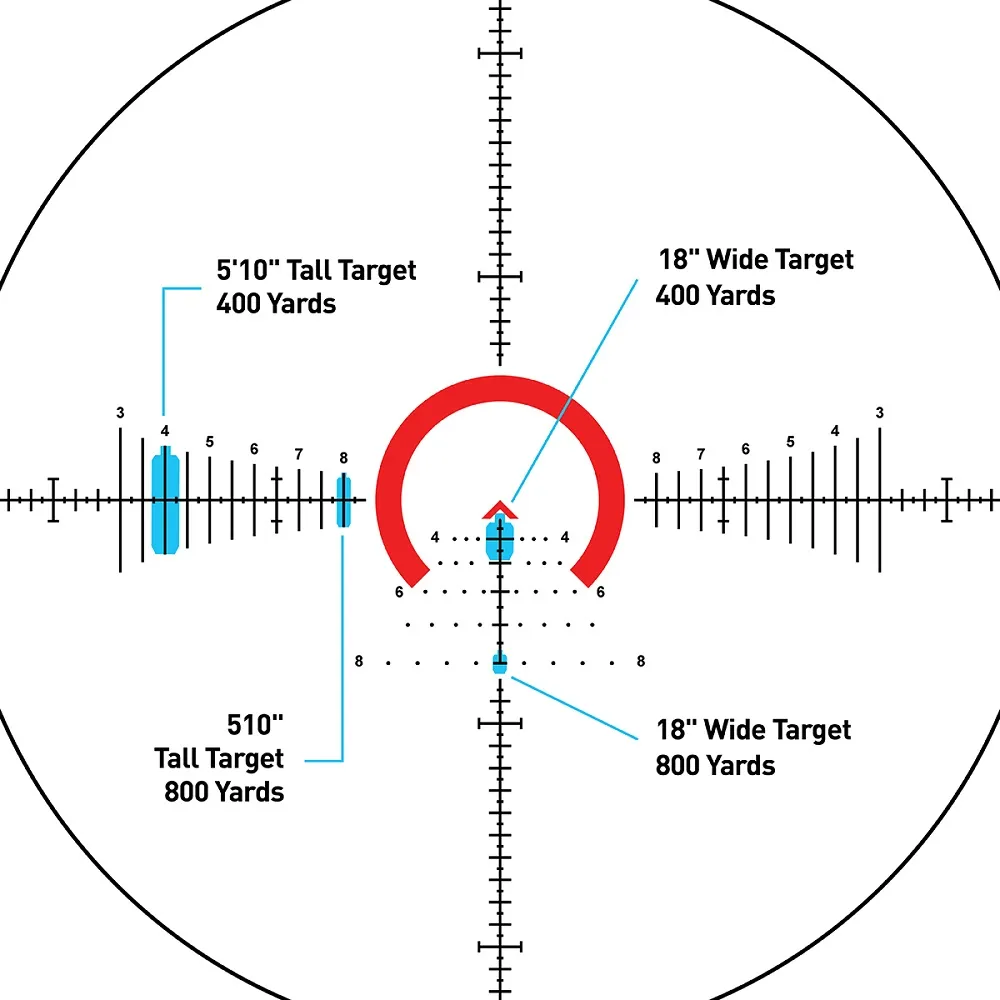
To demonstrate how easy ranging is with ACSS, let’s look at a common scenario. Say you’re shooting at a silhouette target at an unknown distance. In this scenario, you are using an ACSS reticle with auto-ranging stadia matching an 18” width. Most standard silhouette targets are 18” across, so by comparing the width of your reticle stadia to the target silhouette, you’ll have an immediate estimate. There’s no extra math, so you can get rounds on target in just seconds.
Wrap Up
Once you understand the process and principles behind ranging targets using a rifle scope, it’s not difficult to get an accurate estimate of your range to nearly any target. So long as you can estimate its size and use your reticle effectively, you will know roughly how far you are from your target without anything more than your scope (possibly a calculator).



